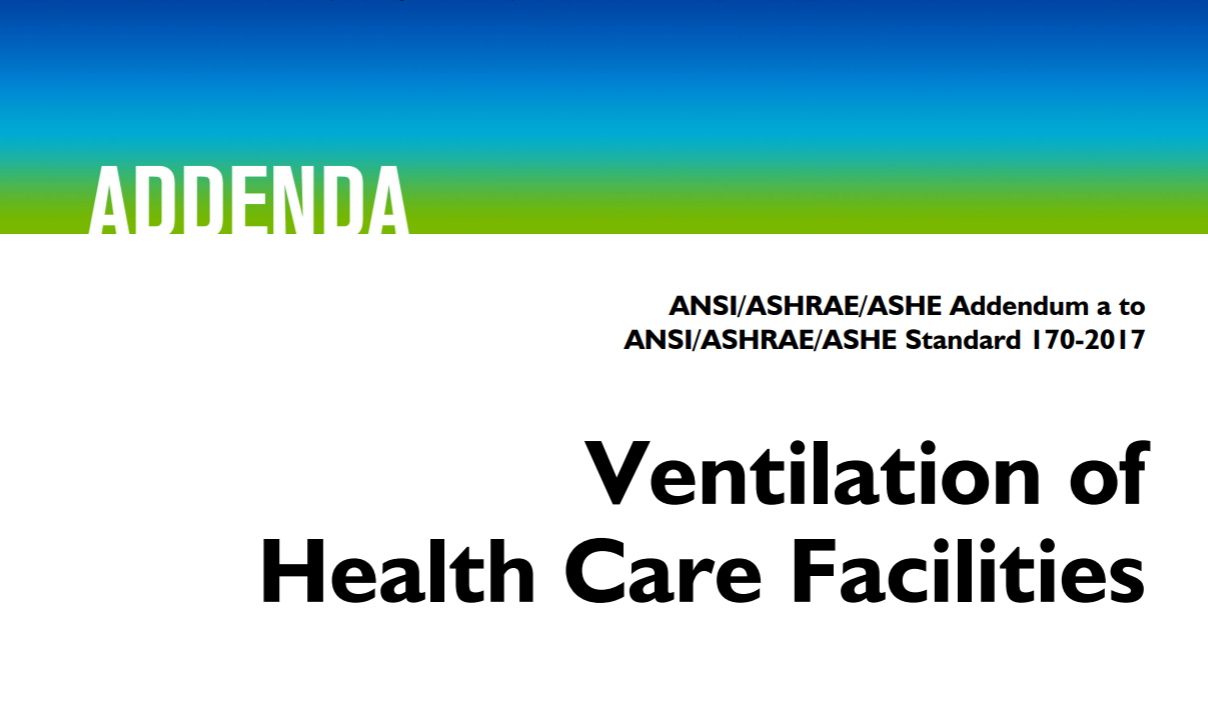The ongoing global pandemic has brought with it a marked increase in public awareness of the impact and importance of indoor air quality, in large part due to the evidence that COVID-19 infections have been spreading via airborne channels as well as via person-to-person contact.
In a new video, air filtration expert Kyle Petersen, Healthcare Segment Manager at Camfil USA, explains ASHRAE Standard 170-2017 Addendum-a, which lists updated air filtration efficiency recommendations for healthcare facilities.
What is ASHRAE?
ASHRAE, which stands for the American Society of Heating, Refrigerating and Air-Conditioning Engineers, is a professional association made up of engineers, architects, mechanical contractors, and other professionals who contribute their knowledge and experience to improving the HVAC industry. With more than 57,000 members across 132 countries worldwide, ASHRAE is the authority when it comes to developing technical standards for indoor air quality and related areas.
What is ASHRAE Standard 170?

According to ASHRAE, Standard 170 was “developed in partnership with Facility Guidelines Institute (FGI) and American Society of Health Care Engineering (ASHE)” and “has been providing key guidance on ventilation requirements for health care industry facilities since 2008.”
“The committee draws on the experience of its members and others in their industry to develop these baseline standards and minimum requirements, with the hopes that local municipalities will enforce them to ensure public safety,” says Petersen.
First introduced in 2008, ASHRAE Standard 170 is published on a four-year cycle; the current version was first released in 2017. As in any science-based field, what experts know about indoor air quality is constantly being refined and updated, as is the latest HVAC and air filtration technology. Between publications, therefore, ASHRAE sometimes releases Addendums. “It’s important to keep in mind that ASHRAE 170 is a continuous work in progress,” he says, “The committee meets on a regular basis, and they continually update the standard to reflect technological or environmental changes that are occurring out in the real world.”
How Does Standard 170-2017 Addendum-a Impact Healthcare Standards?
The recommendations moving forward are designated by space as well as the type of facility. Mr. Petersen stresses that the term “healthcare facilities” shouldn’t be understood to mean only large buildings with an “H” on them. The term also includes outpatient centers and assisted living facilities. Healthcare facilities may be the buildings where COVID-19 is being treated, but the link between poor air quality and poor health outcomes extends beyond healthcare facilities and into commercial and retail buildings as well. indoor air quality is and will continue to be vital to health and healthcare outside of the context of the pandemic. “When you start to take this broader view of healthcare, you start to really see how vital good air quality is.”
Addendum-a breaks healthcare facilities down into three broad categories, and makes specific recommendations for each:
-
Inpatient facilities, such as hospitals
-
Outpatient facilities, such as urgent care rooms
-
Residential facilities, such as assisted living facilities
Importantly, 170 Addendum-a states in an informative appendix “Where listed, MERV rating is assumed to be non-degrading,” therefore implying that the recommendations are for MERV-A rated filters, which retain their effectiveness for the duration of their product life.
Addendum-a is publicly available here. For further clarification regarding how your healthcare facility may need to adapt to these recommendations, let an air filtration specialist contact you.
About Camfil Clean Air Solutions
For more than half a century, Camfil worldwide has been helping people breathe cleaner air. As a leading manufacturer of premium clean air solutions, we provide commercial and industrial systems for air filtration and air pollution control that improve worker and equipment productivity, minimize energy use, and benefit human health and the environment. During the COVID-19 pandemic, Camfil has been applying their decades of experience in biosafety containment, healthcare, and other sectors of the air filtration industry to provide technological solutions for the public as well as in hospitals and healthcare facilities. To get in touch with a local Camfil consultant, please click here.
##
Media Contact:
Lynne Laake
Camfil USA Air Filters
T: 888.599.6620
E: Lynne.Laake@camfil.com
F: Friend Camfil USA on Facebook
T: Follow Camfil USA on Twitter
Y: Watch Camfil Videos on YouTube
L: Follow our LinkedIn Page
The post Air Filtration Expert Explains ASHRAE Standard-170-2017 Addendum-a appeared first on Air Filters for Clean Air.
from Air Filters for Clean Air
